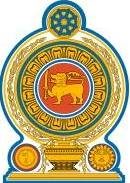Tourism
SRI LANKA AT A GLANCE
Set in the Indian Ocean in South Asia, the tropical island nation of Sri Lanka has a history dating back to the birth of time. It is a place where the original soul of Buddhism still flourishes and where nature’s beauty remains abundant and unspoilt.
Few places in the world can offer the traveller such a remarkable combination of stunning landscapes, pristine beaches, captivating cultural heritage and unique experiences within such a compact location. Within a mere area of 65,610 kilometres lie 8 UNESCO World Heritage Sites, 1,330 kilometres of coastline – much of it pristine beach – 15 national parks showcasing an abundance of wildlife, nearly 500,000 acres of lush tea estates, 250 acres of botanical gardens, 350 waterfalls, 25,000 water bodies and a culture that extends back to over 2,500 years.
This is an island of magical proportions, once known as Serendib, Taprobane, the Pearl of the Indian Ocean, and Ceylon. Discover refreshingly Sri Lanka!
| Official Name: | Democratic Socialist Republic of Sri Lanka | ||
| Government Type: | Republic | ||
| Location: | Latitude 5° 55. to 9° 50. north, Longitude 79° 42. to 81° 52., 650km north of the equator | ||
| Dimensions: | 430km North to South, 225km East to West | ||
| Coastline: | 1,340km | ||
| Area: | 65,525km | ||
| Currency (code): | Sri Lankan Rupee (LKR) | ||
| Independence: | 4 February 1948 | ||
| Administrative Capital: | Sri Jayewardenepura | ||
| Commercial Capital: | Colombo | ||
| Administrative Divisions: | Typically tropical, with a northeast monsoon (December to March) bringing unsettled weather to the north and east, and a southwest monsoon (June to October) bringing bad weather to the south and west | ||
| Terrain: | Mostly low, flat to rolling plain; mountains in south-central interior | ||
| Highest Mountain: | Pidurutalagala, 2,524m | ||
| Highest Waterfall: | Bambarakanda, 263m | ||
| National Flower | The Blue Water Lily (Nymphaea stellata). | ||
| National Parks and Nature Reserves Area: | 8,000sq.km | ||
| Population: | 21,128,773 | ||
| Population Growth Rate: | 1.3% | ||
| Population Density: | 309 people per sq km | ||
| Life Expectancy at Birth | 74 female, 64 male | ||
| Literacy Rate : | Female 87.9 Male 92.5 | ||
| Ethnic Groups: | Sinhalese 73.8%, Sri Lankan Moors 7.2%, Indian Tamil 4.6%, Sri Lankan Tamil 3.9%, other 0.5%, unspecified 10% (2001 census) | ||
| Languages: | Sinhala (official and national language) 74%, Tamil (national language) 18%, other 8% Note: English (a link language commonly) is used in government and spoken competently by about 10% of the population |
||
| Religion: | Buddhist 69.1%, Muslim 7.6%, Hindu 7.1%, Christian 6.2%, unspecified 10% (2001 census) | ||
| Time Zone: | Sri Lanka Standard Time is five and a half hours ahead of GMT. (Allowance should be made for summer-time changes in Europe.) | ||
| International Dialing: | +94 | ||
| Electricity: | 230 . 240 volts, 50 cycles AC. If you travel with a laptop computer bring a stabilizer | ||
| Labour Force | 34.3% of the labour population is employed in agriculture, 25.3% in industry and 40.4% in services: 40.4% (30 June 2006 est.) The unemployment rate is 5.7% (2007 est.) | ||
| Agriculture & Products: | Rice, Sugarcane, Grains, Pulses, Oilseed, Spices, Tea, Rubber, Coconuts, milk, Eggs, Hides, Beef, Fish | ||
| Industries: | Processing of rubber, tea, coconuts, tobacco and other agricultural commodities, telecommunications, insurance, banking; clothing, textiles, cement, petroleum refining. | ||
| Exports: | Textiles and apparel; tea and spices; diamonds, emeralds, rubies; coconut products, rubber manufactures, fish | ||
| Imports: | Main import commodities are textile fabrics, mineral products, petroleum, foodstuffs, machinery and transportation equipment | ||
| Gross Domestic Product (GDP):
GDP Per Capita: |
US$ 4,310 / US$ 13,847 PPP |
||
| Flag Description: | Yellow with two panels; the smaller hoist-side panel has two equal vertical bands of green (hoist side) and orange; the other panel is a large dark red rectangle with a yellow lion holding a sword, and there is a yellow bo leaf in each corner; the yellow field appears as a border around the entire flag and extends between the two panels |
SOURCE: Sri Lanka Tourism Promotion Bureau

